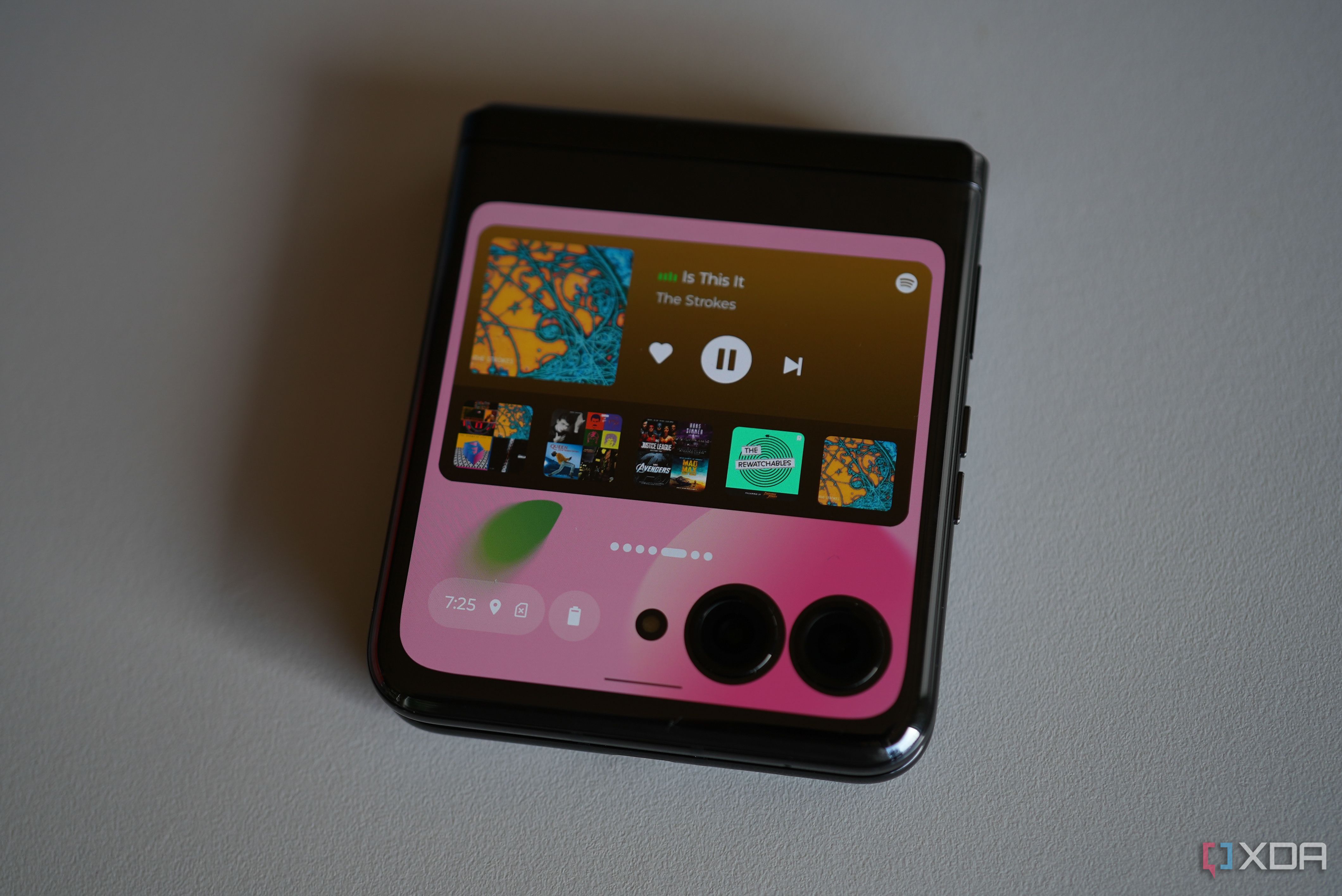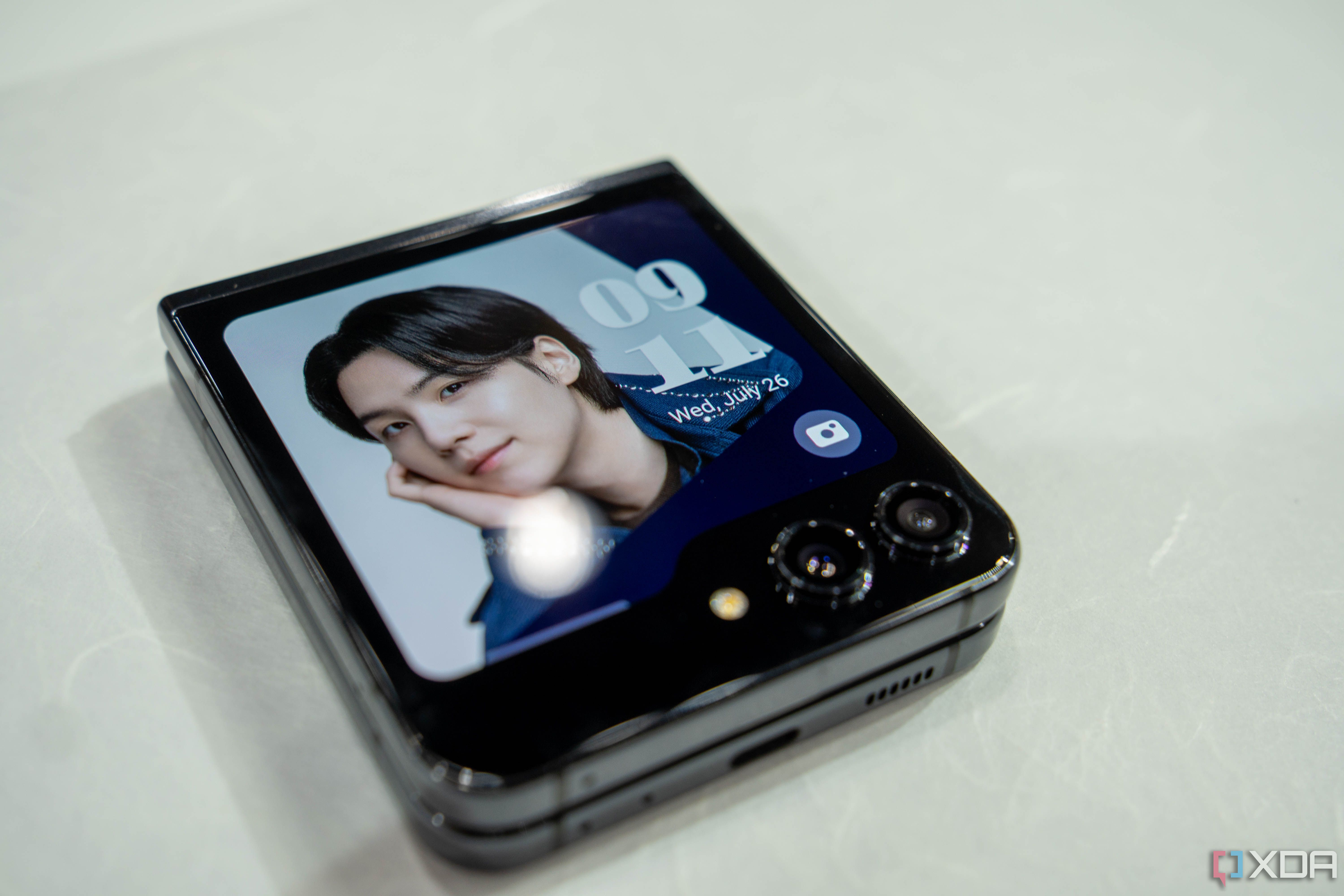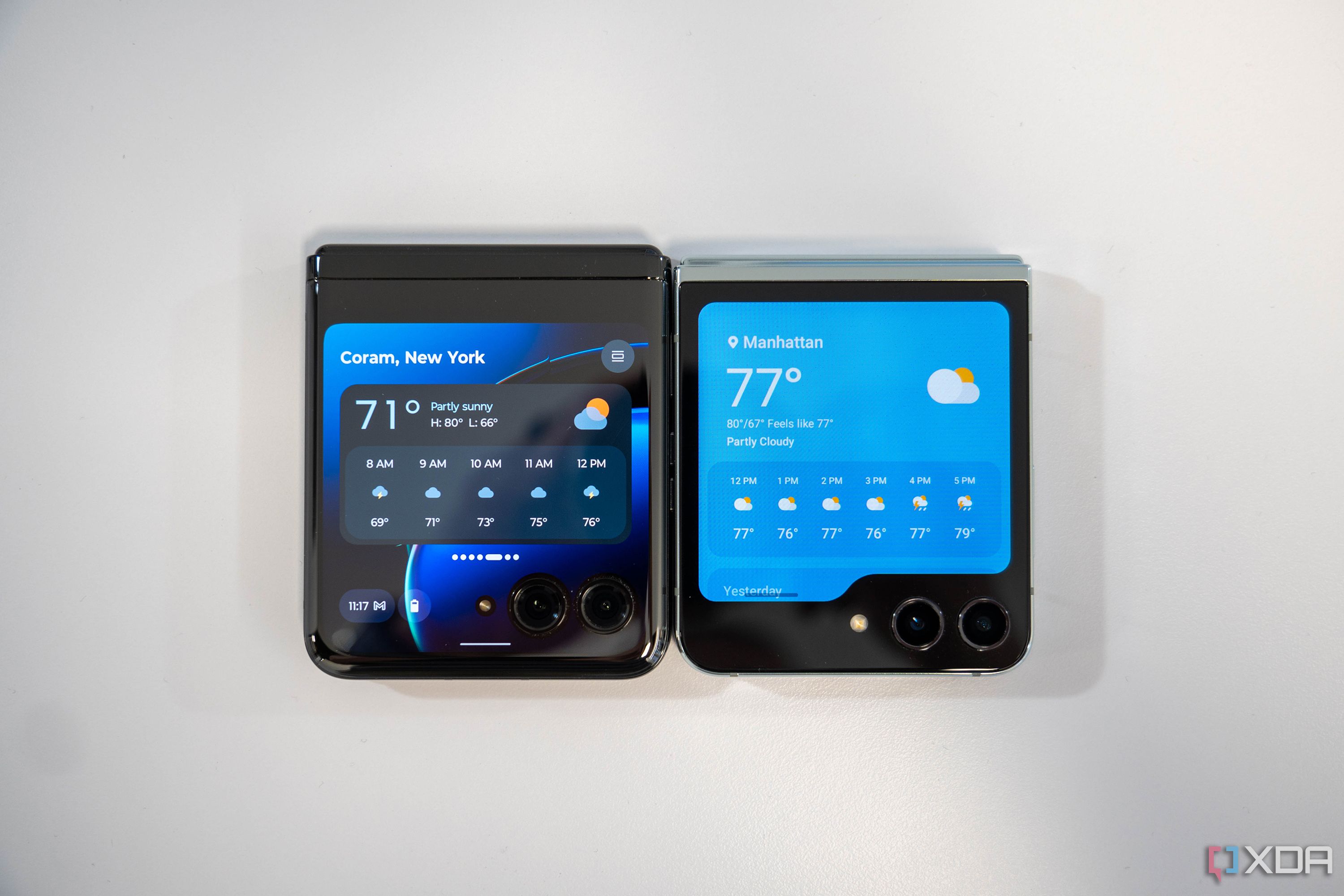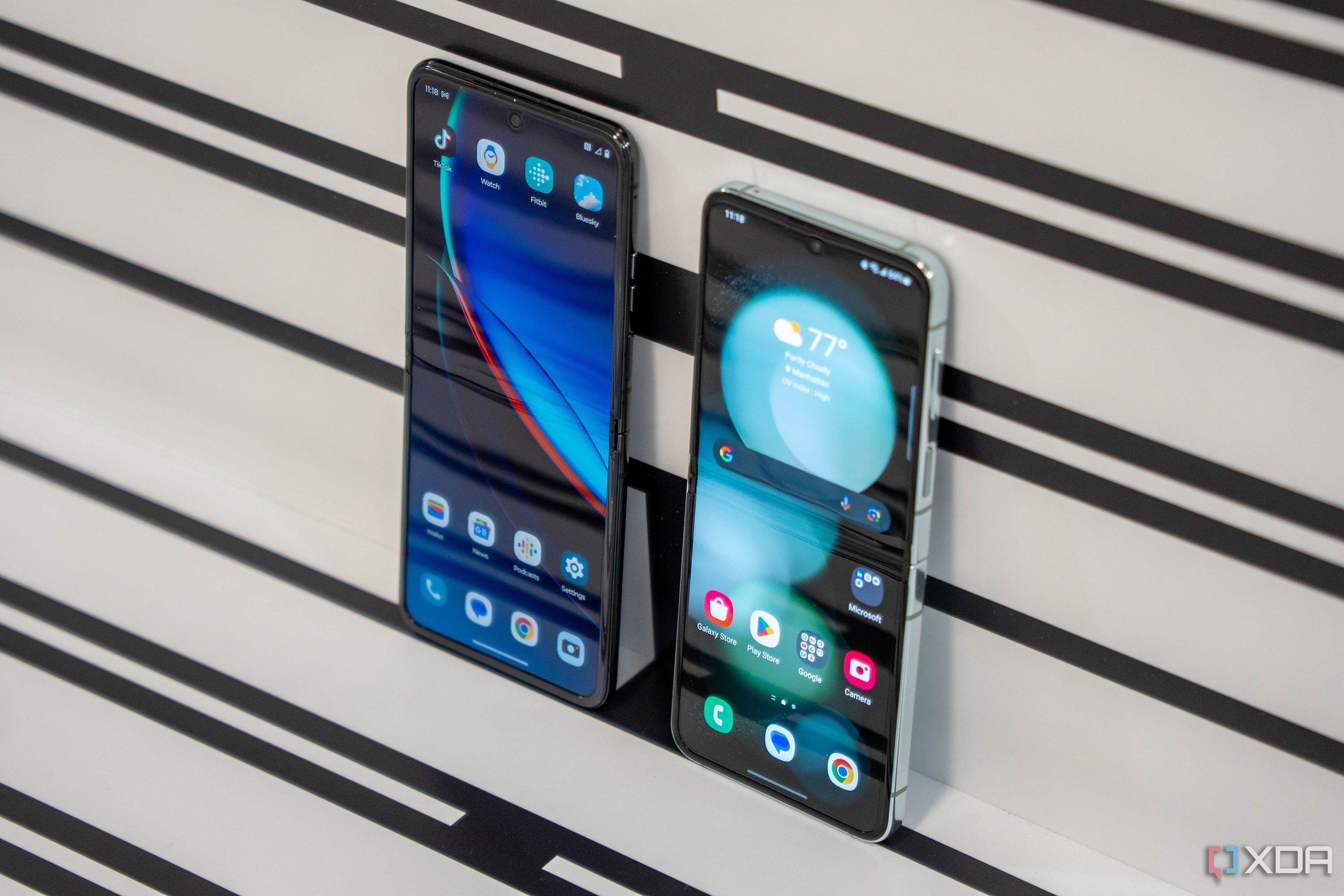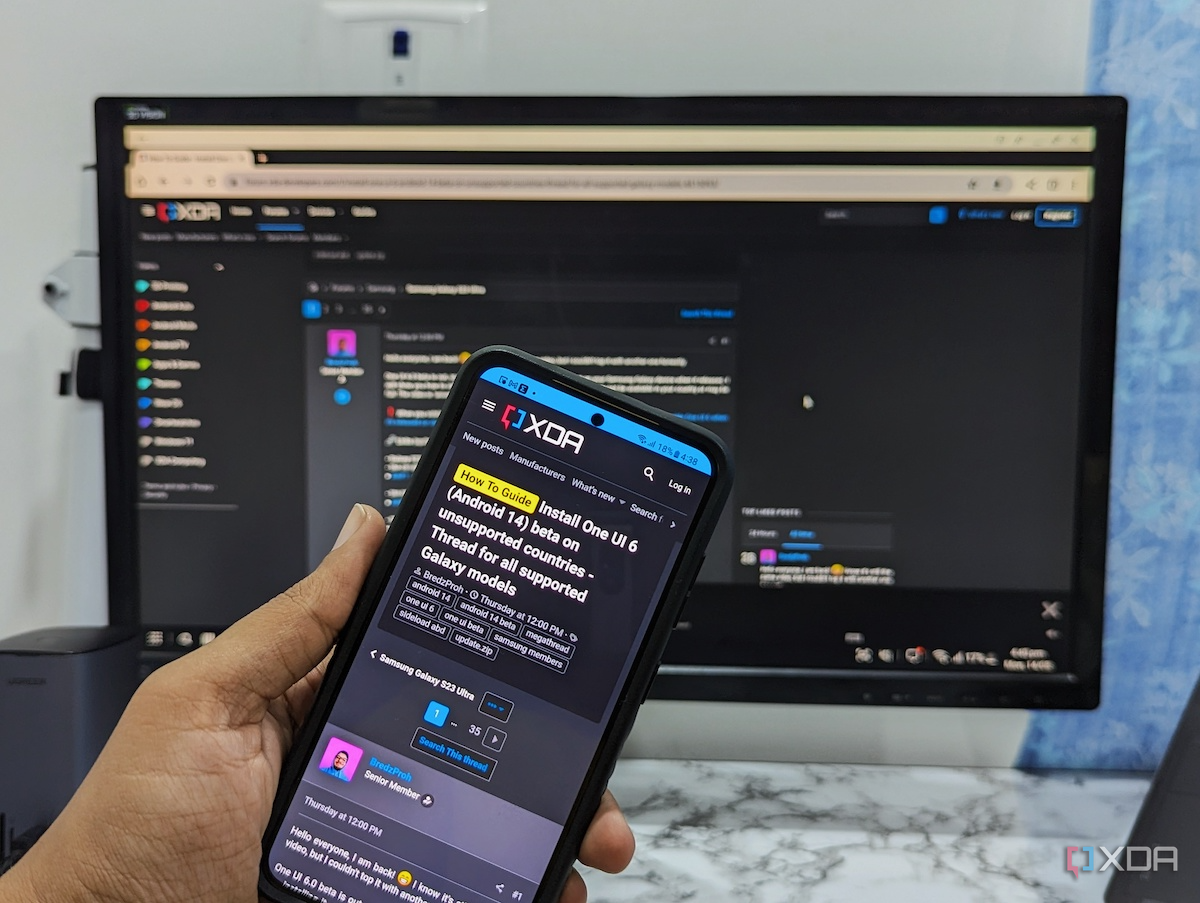If you’re in the market for a new phone and are considering picking up a clamshell foldable, the Motorola Razr+ (2023) and Galaxy Z Flip 5 are the top (and only) contenders for U.S. users. Since both phones are quite similar in terms of hardware and price, choosing one over the other might come down to brand preference or a deal that might be available. While each phone does something better than the other, the differences are minimal enough that most people won’t know the difference.
However, I recently picked up the Razr+ over the Z Flip 5 for a few key reasons. Even though the Galaxy Z Flip 5 is better than the competition in some areas, the Razr+ pulls ahead in a couple places that matter.
1 The Moto Razr+ (2023) has a better cover screen
While both foldable phones feature a large cover screen, you get a better hardware and software experience on the Razr+ (2023). Its 3.6-inch AMOLED display offers a 144Hz refresh rate, 2640x1080p resolution, 1,100 nits of peak brightness, HDR10+ support, and Gorilla Glass Victus protection. The Galaxy Z Flip 5’s 3.4-inch Super AMOLED cover screen is smaller by comparison, has a weird shape, and has a weaker 720×748 resolution. It’s also capped at 60Hz but gets significantly brighter (up to 1,600 nits) and features superior Gorilla Glass Victus 2 protection.
In addition to offering better cover screen hardware, Motorola’s software implementation is better than Samsung’s Flex Window experience. Although it has fewer useful widgets and customization options, Motorola’s software makes using the cover screen feel more like a full-fledged phone. The Razr+ just lets you do much more without opening the main display.
For instance, the Razr+ offers app support for the cover screen by default, but Samsung requires you to jump through a few hoops to set it up. The Razr+ also gives you access to the same quick settings and notifications you get on the main display, and it even lets you long-press on the tiles for additional settings or expand notifications for more options. The Galaxy Z Flip 5’s Quick Settings menu is fairly limited, and it requires you to open the main display if you want to, say, change the current Wi-Fi network, switch to a different Bluetooth device, or accept two-factor authentication prompts.
Left: Motorola Razr+, Right: Samsung Galaxy Z Flip 5
Furthermore, the Razr’s cover screen supports third-party keyboards, offers app continuity support, and even lets you multitask by quickly switching between recent apps. The Galaxy Z Flip 5, on the other hand, only lets you use the built-in Samsung Keyboard on the cover screen, does not let you continue using apps when you close the main display, and it doesn’t support multitasking.
Because of Samsung’s cover screen software, you’ll feel the need to open the main display more often than you would on the Razr+, which defeats the purpose of the large cover screen. That was a major dealbreaker for me.
2 Motorola’s foldable display has a less noticeable crease
I bought the Galaxy Z Flip 3 soon after its launch in August 2021, but I sold it after two months because of its tiny cover screen, poor battery life, and distracting crease on the foldable screen. While the Galaxy Z Flip 5 is a significant upgrade and addresses two of my problems with the Flip 3, its foldable display still has that crease.
The foldable screen on the Motorola Razr+ (2023) also has a crease, but it’s shallower and less noticeable in comparison. It’s less distracting while enjoying full-screen content, and you won’t feel it as much while swiping on the display.
Interestingly, the Razr+ isn’t the only phone better than Samsung’s foldables in this department. Oppo’s latest foldables, the Find N2 and Find N2 Flip, do a fantastic job of hiding the crease (although those aren’t available in the U.S.), and it’s high time Samsung caught up, especially since it has more experience in the foldable space.
3 The Galaxy Z Flip 5 lacks DeX support
Previous Samsung Galaxy Z Flip lineup models featured a USB 2.0 Type-C port. This was likely one of the reasons why the company didn’t offer DeX support on the Flip lineup. We expected that to change with the Galaxy Z Flip 5, as it features a faster USB 3.2 Type-C port, but the device still doesn’t offer DeX mode.
That’s not the case with the Razr+. Motorola’s software experience for includes support for its Ready For feature, which lets you seamlessly connect to your PC and access apps, files, and notifications on a larger screen. In addition, you get a desktop-like software experience to get some work done in a pinch. Although Ready For isn’t as feature-rich as Samsung DeX, nor is it quite the same, it’s better than not having a desktop mode at all.
The Galaxy Z Flip 5 gets some things right, but it’s not enough
While I didn’t buy the Galaxy Z Flip 5 for the reasons mentioned above, it’s not a bad phone by any means. It actually does a few things better than the Razr+. The Galaxy Z Flip 5 has better build quality with a sturdier hinge, a more feature-rich software experience, includes more widgets and customization options for the cover screen, and even offers always-on display support on the Flex Window. Samsung’s foldable also has Qualcomm’s latest flagship chipset, giving it a slight edge on the performance front, and it comes with better long-term software support.
If you value these features more than the better cover screen experience, less noticeable crease, and Ready For support you get with the Razr+ (2023), you should probably buy the Galaxy Z Flip 5. But for everybody else, Motorola’s latest foldable will be a better pick. It pulls ahead in the areas where it matters.
[ad_2]

